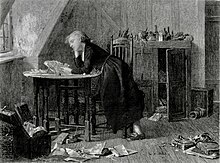I want to share about charateristic and type of some football shoes.For you who like play football and want to buy a football shoes,these are i recommend to you fellas.check this out!
1.Nike Mercurial
The Mercurial is a football bootmanufactured by Nike. The boot is known for being lightweight. Because of this, the boot is favoured by many players for whom speed is a very important part of their game, notably wingers or strikers. The boot is now in its seventh version the Nike Mercurial Vapor Superfly 3, currently available in two colourways: Red Plum/Volt, and Blue/Platinum/Orange.
The boot is available in either Soft Ground (SG) or Firm Ground (FG) versions. The SG version's sole plate is fitted with six NikeSnap removable studs, which can be purchased in different lengths, for the first and second models, and traditional screw-in aluminium studs for versions 3 to 7; the FG version has twelve moulded blades.
2.Nike Tiempo
Nike Tiempo is a brand of football (or soccer in the US) boots and gear. It's sportswear established by Nike. It consists of football cleats, indoor shoes, shorts, warm up gear, and shinguards, but they're most known for the football cleats. This brand over time has become famous and its gear can be bought in stores and/or online.
3.Nike CTR 360
The Nike CTR360 Maestri II football boot gives you that defence-splitting pass and that split-second advantage with its exceptional first touch on the ball.
4.Adidas F50
The Adidas F50 range of football boots is Adidas's signature line of customisable, lightweight boots. First released in 2004, in the build-up toUEFA Euro 2004, the range was released as a successor of the X-Line range and as a direct competitor to Nike's Mercurial Vapor range, which had been released two years earlier. The name F50 (Football 50) is a reference to the year 1954 when the West German national teamwon the World Cup in revolutionary Adidas boots with exchangeable studs. Adidas decided to mark this occasion with another revolutionary boot exactly 50 years after the event in 2004.
5.Specs
This one is special made in Indonesia.The shoes is not to expensive but the quality almost same as nike or adidas.Many football player from Indonesia wear this shoes such as Yongki Kurniawan,Ferdinand Sinaga,and Christian 'El Loco' Gonzales.
Those are the recommended shoes for all of you who like to play soccer.I hope those shoes can sattisfied you.Thanks guys






